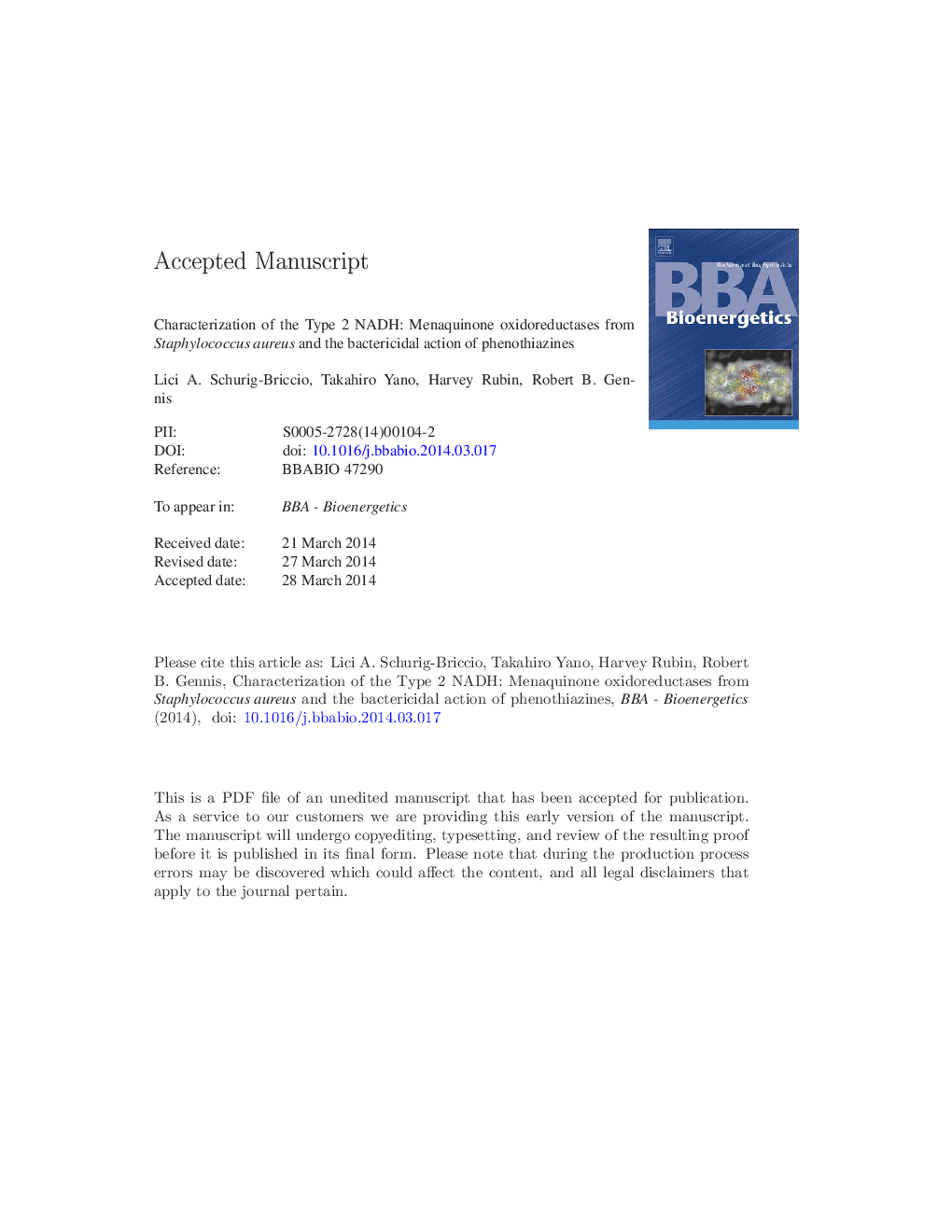| Article ID | Journal | Published Year | Pages | File Type |
|---|---|---|---|---|
| 10795646 | Biochimica et Biophysica Acta (BBA) - Bioenergetics | 2014 | 46 Pages |
Abstract
Methicillin-resistant Staphylococcus aureus (MRSA) is currently one of the principal multiple drug resistant bacterial pathogens causing serious infections, many of which are life-threatening. Consequently, new therapeutic targets are required to combat such infections. In the current work, we explore the type 2 Nicotinamide adenine dinucleotide reduced form (NADH) dehydrogenases (NDH-2s) as possible drug targets and look at the effects of phenothiazines, known to inhibit NDH-2 from Mycobacterium tuberculosis. NDH-2s are monotopic membrane proteins that catalyze the transfer of electrons from NADH via flavin adenine dinucleotide (FAD) to the quinone pool. They are required for maintaining the NADH/Nicotinamide adenine dinucleotide (NAD+) redox balance and contribute indirectly to the generation of proton motive force. NDH-2s are not present in mammals, but are the only form of respiratory NADH dehydrogenase in several pathogens, including S. aureus. In this work, the two putative ndh genes present in the S. aureus genome were identified, cloned and expressed, and the proteins were purified and characterized. Phenothiazines were shown to inhibit both of the S. aureus NDH-2s with half maximal inhibitory concentration (IC50) values as low as 8 μM. However, evaluating the effects of phenothiazines on whole cells of S. aureus was complicated by the fact that they are also acting as uncouplers of oxidative phosphorylation. This article is part of a Special Issue entitled: 18th European Bioenergetic Conference.
Related Topics
Life Sciences
Agricultural and Biological Sciences
Plant Science
Authors
Lici A. Schurig-Briccio, Takahiro Yano, Harvey Rubin, Robert B. Gennis,
